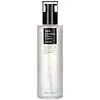What's inside
What's inside
 Key Ingredients
Key Ingredients

 Benefits
Benefits

 Concerns
Concerns

 Ingredients Side-by-side
Ingredients Side-by-side

Water
Skin ConditioningAzelaic Acid
BufferingEthylhexyl Cocoate
EmollientGlyceryl Stearate
EmollientPEG-100 Stearate
Propylene Glycol
HumectantNiacinamide
SmoothingCetyl Alcohol
EmollientPolysorbate 80
EmulsifyingCetearyl Olivate
Salicylic Acid
MaskingMelaleuca Alternifolia Leaf Oil
AntioxidantZingiber Officinale Rhizome Extract
AntimicrobialMandelic Acid
AntimicrobialAloe Barbadensis Leaf Juice
Skin ConditioningSaccharum Officinarum Extract
MoisturisingOlea Europaea Fruit Oil
MaskingColeus Forskohlii Root Oil
EmollientGlyceryl Laurate
EmollientSodium Polyacrylate
AbsorbentDimethicone
EmollientCyclopentasiloxane
EmollientTrideceth-6
EmulsifyingPEG/PPG-18/18 Dimethicone
EmulsifyingZinc Methionine
Ammonium Acryloyldimethyltaurate/Vp Copolymer
Sorbitan Olivate
EmulsifyingAcrylates/C10-30 Alkyl Acrylate Crosspolymer
Emulsion StabilisingOctadecyl Di-T-Butyl-4-Hydroxyhydrocinnamate
AntioxidantTetrahydropiperine
Skin ConditioningSodium Gluconate
Skin ConditioningPotassium Hydroxide
BufferingDisodium EDTA
Pentaerythrityl Tetra-Di-T-Butyl Hydroxyhydrocinnamate
AntioxidantCaprylyl Glycol
EmollientDecylene Glycol
Skin ConditioningPhenoxyethanol
PreservativeEthylhexylglycerin
Skin ConditioningMethylisothiazolinone
PreservativeCI 77288
Cosmetic ColorantWater, Azelaic Acid, Ethylhexyl Cocoate, Glyceryl Stearate, PEG-100 Stearate, Propylene Glycol, Niacinamide, Cetyl Alcohol, Polysorbate 80, Cetearyl Olivate, Salicylic Acid, Melaleuca Alternifolia Leaf Oil, Zingiber Officinale Rhizome Extract, Mandelic Acid, Aloe Barbadensis Leaf Juice, Saccharum Officinarum Extract, Olea Europaea Fruit Oil, Coleus Forskohlii Root Oil, Glyceryl Laurate, Sodium Polyacrylate, Dimethicone, Cyclopentasiloxane, Trideceth-6, PEG/PPG-18/18 Dimethicone, Zinc Methionine, Ammonium Acryloyldimethyltaurate/Vp Copolymer, Sorbitan Olivate, Acrylates/C10-30 Alkyl Acrylate Crosspolymer, Octadecyl Di-T-Butyl-4-Hydroxyhydrocinnamate, Tetrahydropiperine, Sodium Gluconate, Potassium Hydroxide, Disodium EDTA, Pentaerythrityl Tetra-Di-T-Butyl Hydroxyhydrocinnamate, Caprylyl Glycol, Decylene Glycol, Phenoxyethanol, Ethylhexylglycerin, Methylisothiazolinone, CI 77288
 Reviews
Reviews

Ingredients Explained
These ingredients are found in both products.
Ingredients higher up in an ingredient list are typically present in a larger amount.
Niacinamide is a multitasking form of vitamin B3 that strengthens the skin barrier, reduces pores and dark spots, regulates oil, and improves signs of aging.
And the best part? It's gentle and well-tolerated by most skin types, including sensitive and reactive skin.
You might have heard of "niacin flush", or the reddening of skin that causes itchiness. Niacinamide has not been found to cause this.
In very rare cases, some individuals may not be able to tolerate niacinamide at all or experience an allergic reaction to it.
If you are experiencing flaking, irritation, and dryness with this ingredient, be sure to double check all your products as this ingredient can be found in all categories of skincare.
When incorporating niacinamide into your routine, look out for concentration amounts. Typically, 5% niacinamide provides benefits such as fading dark spots. However, if you have sensitive skin, it is better to begin with a smaller concentration.
When you apply niacinamide to your skin, your body converts it into nicotinamide adenine dinucleotide (NAD). NAD is an essential coenzyme that is already found in your cells as "fuel" and powers countless biological processes.
In your skin, NAD helps repair cell damage, produce new healthy cells, support collagen production, strengthen the skin barrier, and fight environmental stressors (like UV and pollution).
Our natural NAD levels start to decline with age, leading to slower skin repair, visible aging, and a weaker skin barrier. By providing your skin niacinamide, you're recharging your skin's NAD levels. This leads to stronger, healthier, and younger looking skin.
Another name for vitamin B3 is nicotinamide. This vitamin is water-soluble and our bodies don't store it. We obtain Vitamin B3 from either food or skincare. Meat, fish, wheat, yeast, and leafy greens contain vitamin B3.
The type of niacinamide used in skincare is synthetically created.
Learn more about Niacinamide